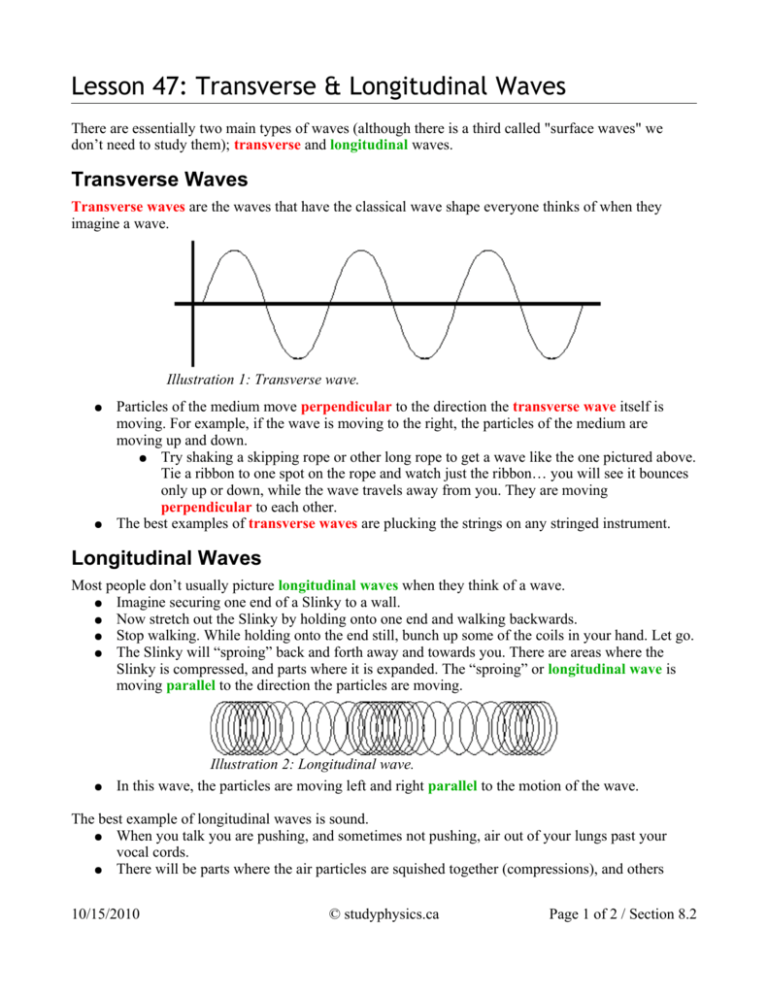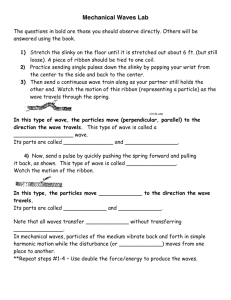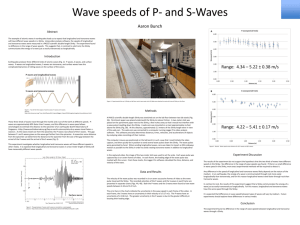Lesson 47: Transverse & Longitudinal Waves
advertisement

Lesson 47: Transverse & Longitudinal Waves There are essentially two main types of waves (although there is a third called "surface waves" we don’t need to study them); transverse and longitudinal waves. Transverse Waves Transverse waves are the waves that have the classical wave shape everyone thinks of when they imagine a wave. Illustration 1: Transverse wave. ● ● Particles of the medium move perpendicular to the direction the transverse wave itself is moving. For example, if the wave is moving to the right, the particles of the medium are moving up and down. ● Try shaking a skipping rope or other long rope to get a wave like the one pictured above. Tie a ribbon to one spot on the rope and watch just the ribbon… you will see it bounces only up or down, while the wave travels away from you. They are moving perpendicular to each other. The best examples of transverse waves are plucking the strings on any stringed instrument. Longitudinal Waves Most people don’t usually picture longitudinal waves when they think of a wave. ● Imagine securing one end of a Slinky to a wall. ● Now stretch out the Slinky by holding onto one end and walking backwards. ● Stop walking. While holding onto the end still, bunch up some of the coils in your hand. Let go. ● The Slinky will “sproing” back and forth away and towards you. There are areas where the Slinky is compressed, and parts where it is expanded. The “sproing” or longitudinal wave is moving parallel to the direction the particles are moving. ● Illustration 2: Longitudinal wave. In this wave, the particles are moving left and right parallel to the motion of the wave. The best example of longitudinal waves is sound. ● When you talk you are pushing, and sometimes not pushing, air out of your lungs past your vocal cords. ● There will be parts where the air particles are squished together (compressions), and others 10/15/2010 © studyphysics.ca Page 1 of 2 / Section 8.2 where they are allowed to separate (expansions). Video Killed the Radio Star! You can see me make some transverse and longitudinal waves on Youtube by clicking here . 10/15/2010 © studyphysics.ca Page 2 of 2 / Section 8.2









